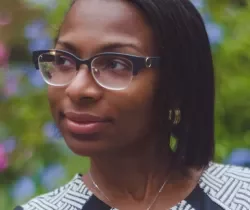Events, as we know them, have changed, but the power of a live event still lies in the emotional impact of making authentic human connections. To achieve that in our new reality, your brand needs to show attendees that you hear and see them — even if your event is virtual.
Yet too many attendees end up feeling invisible because event planners are still falling short of designing truly inclusive events, according to a recent study from Meeting Professionals International. For example, there’s a general lack of event materials or translation services available in languages other than English. Furthermore, selected and promoted subject matter experts or guest speakers rarely represent groups that are not in the majority.
This dangerous status quo distances potential advocates and risks dulling the experience — and even the brand. But when your program accounts for all of your audience members and their diverse needs and backgrounds, you can personalize their event experiences just as you do for your “least common denominator” audience. Attendees feel heard and seen, which puts them in the optimal state for receiving your messages.
Creating the Status Quo
It’s not that event planners are trying to exclude people; it’s that they tend to be so busy and focused on the event itself that they become shortsighted. When they do consider their audience, they’re thinking about their common denominator: the majority persona that they can expect to populate the crowd. But this is a risky strategy. It alienates potential audiences, which could actually be the most exciting and rewarding segment in the future.
In the tech industry, for example, people tend to assume that the vast majority of their event attendees will be men in their 30s and 40s. But at the same time, tech companies want to empower women in their industry and increase their reach. To achieve that goal, they need to reach the women in the audience — even if they make up only 5% of attendees.
Additionally, organizers don’t consider diversity a creative problem: In the same MPI study, 20% of organizers admitted that complying with legal requirements was their main imperative for investing in diversity initiatives. Even when organizers are conscious of wanting to attract a diverse audience, they often miss the step of diversifying their own team and presenting panel. They plan in a vacuum and are less able to see the mistakes they’re making.
3 Strategies for Inclusive Virtual Events
It’s important to plan for differences in race, gender and socioeconomic background, but don’t stop there. Design an event that’s inclusive of those with different learning styles, individuals who are neurodivergent, new mothers, people with disabilities, introverts and people of all sizes.
Here are three ways to shape your virtual events around diversity and inclusion:
1. Test outside the box. When planning an event, organizers often stick to a core group of colleagues. They forget to invite outside voices to add perspective and illuminate potential weak spots. When you’re testing options for topics, themes, speakers and marketing, establish a focus group to take your ideas and expose them to a more diverse conversation.
2. Diversify your core team. It’s one thing to look outside your organization for diverse voices, but you can go one step further and seek to represent those voices internally. Hire for backgrounds that are underrepresented in your team and give planning power to the people you want to engage with. This will — almost automatically — make your offering feel more authentic to a wider range of people.
3. Know what you know and look to others to fill in the gaps. Choose a diverse group of speakers. Don’t just look for the “best” in your field, the recognized “experts” at the top of the pack. Instead, look at other forms of achievement, unique viewpoints and stories of overcoming adversity. Your core audience will still be impressed, but you’ll also be telling other groups that this is a space for them, too.
The first step to making attendees feel welcome is to represent and reflect them — not just in your marketing materials, but in your speaker lineups and your internal planning teams, too. An audience that feels seen and heard will connect with your brand and your message.
Don’t miss any event-related news: Sign up for our weekly e-newsletter HERE and engage with us on Twitter, Facebook, LinkedIn and Instagram!



Add new comment